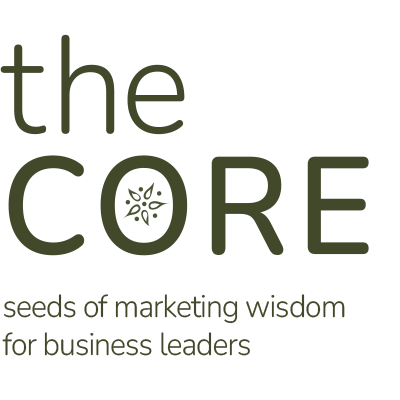Should your brand be on TikTok? The answer to this question, like all marketing strategy approaches, varies widely based on the brand you’re trying to promote. Diving into a new platform can give you an advantage, but an anemic posting or uniformed content creation may do more damage to your brand integrity than not engaging at all. Above all: you shouldn’t be on TikTok simply to be on TikTok. Instead, you should analyze your audience, assess your brand identity, and consciously decide if marketing on TikTok can help you increase your revenue or your brand’s reach. As you make that decision, here are a few factors to consider.
How to Turn Customer Reviews into Solid Marketing Content
If you have raving fans, it’s great to let potential leads know it! Customers take online reviews seriously, and the role it plays in consumer decisions continues to increase. Research from BrightLocal shows just how seriously potential customers take online reviews. 84% percent of buyers give online reviews the same weight in decision making as personal referrals.
Online reviews are now starting to eclipse referral-based business. as Northwestern University finds that consumers are 270% more likely to buy a product or service with 5 positive reviews than a product or service with no reviews. That’s hugely significant! In order to harness the power of these reviews, use them in your marketing efforts to increase consumer trust and boost sales.
Use Customer Reviews To Enhance Your Website SEO
There are a few ways to do this. The first is simply to embed the code for Google Reviews in your website so that Google Reviews. This is a good option if the majority of your reviews are positive. Google’s search engine algorithm will recognize the embedded rating system and is likely to rank your site more highly as a result.
The second way to utilize customer reviews is to include them on your website, either by using parts of the review text directly or by including graphics of the positive reviews on your site. (Don’t forget to change the alt text on these images so that they’re search-engine friendly) Google and Yelp hold a high trust cache with consumers, and citing positive reviews can help your brand leverage that trust.
Use Customer Reviews on Social Media
You may also have the advantage of. Keep an eye on videos or posts that tag your brand. If you have a social media manager, have them proactively research any posts where your product or service is tagged. They can use tools like BuzzSumo or Mention to help with this. If they come across a positive review, have your team DM the content creator to ask if the review can be used in marketing materials.
Some reviewers are happy to offer their thoughts gratis, while others work as part or full-time product influencers. Both types of social media reviews can be helpful to weave into your marketing strategy. Screenshots and re-posts of positive reviews can build brand awareness on multiple platforms.
Let Negative Reviews Spur Institutional Changes
Online reviews through Yelp and Google provide business owners with what they say they want most: anonymous feedback close to the point of sale. But business owners are also human, and harsh or negative reviews can leave a bad taste in anyone’s mouth. After you take some time to feel frustrated, see if you can find the kernel of truth in their words. The frustration may be about an inefficient process, an unhelpful team member, or a product flaw.
Rather than stew in frustration, take specific actions to address the issue. However, don’t revamp your entire process over one negative review. Reflect and ask your employees if they’ve also seen evidence of what the review mentions. If it comes up several times, it may be time to analyze and address a potential pain point.
Be Proactive about Interacting With Reviews
If you don’t have a Google My Business account or haven’t updated the account you have, you could be missing out on major opportunities to shape how your brand is perceived. One of these ways is by interacting with online reviews. Brands that interact with customers on Google cultivate a reputation for being proactive and conscientious. Plus, interacting with reviews often can allow you to pinpoint and identify possible customer needs or frustrations before they go viral.
In the world of online reviews, negative feedback begets negative feedback. It shouldn’t go unaddressed, or you may see more of it. Instead, if you see a review that’s unfair or lacking context, you can provide that in your response to an online review. You can also offer to make it right, which goes a long way in securing customer loyalty. It says to potential buyers, “Even if we make a mistake, we will correct our error.”
Need Help Utilizing Your Positive Reviews?
Our strategic, full-service marketing team can help you plan and deploy an innovative marketing approach to court customers and build brand loyalty. Contact Green Apple Strategy today to schedule a consultation. Our team is happy to sit down with you to discuss your marketing goals and how we can help you achieve each and every one of them.
B2B Companies: How to Get the Most Out of Your LinkedIn Presence
Are you struggling to get engagement or reach on LinkedIn?
Social media strategies aren’t what they once were. The formula for success is no longer simply “post more often,” or “interact with your content,” which we’re sure you’ve heard countless times. Especially for B2B companies, social media is a different animal—it doesn’t play by the same rules as its B2C counterparts. Not to worry, though. With a well-planned LinkedIn strategy, you can increase your following, engagement, brand awareness, and even encourage teamwork among your employees.
Here’s what you’ll need to get the most out of your LinkedIn presence:
- A current and engaging business page
- Digestible content that speaks to your audience’s pain points
- Diligent and proactive engagement with your audience
- An employee-centric content and engagement strategy
- A budget for strategic paid ads
How to Get the Most Out of Your LinkedIn Presence
1. A Current and Engaging Business Page
When was the last time you revisited your LinkedIn business page? Chances are, a lot has happened in your business since you first created the page. On top of that, standards for what makes a good business page have changed. Review your page to ensure that all your information is up to date. You may also consider switching up your “About” content to speak directly to your audience. Rather than a simple description of what your business does, capture your audience’s attention by telling them how you can solve their problem specifically. Tell them who you help, what you do, and what your differentiators are. This allows your audience to quickly identify that you’re the right fit. Tip: LinkedIn only shows the first two lines of your description without the user having to click to read more. Make those two sentences count!2. Digestible Content that Speaks to Your Audience’s Pain Points
This is always the tricky one, right? Engaging your audience through eye-catching content. You must find a way to speak to your audience’s needs, while also giving them content that they can quickly digest. That may include graphics, original blog content, thoughtful insights, or shared content from other reputable sources. Try to create (or find and share) content that your audience can learn something from very quickly as they scroll through their feed. Tip: Always tag any relevant people or businesses in your posts. Also, make good use of your hashtags to help users find your content.3. Diligent and Proactive Engagement with Your Audience
We know you’re busy and have very little time to watch over your social accounts. But, engagement is one of the most important elements of your LinkedIn strategy. Ensure that you always answer comments or proactively engage your audience in conversation by asking a question in the first comment on your post. To further encourage engagement, you may also consider tagging someone in the comment who you feel may have particularly good insight on the subject. Tip: Set a calendar reminder to help you remember to check your LinkedIn and engage at least twice per day.4. An Employee-Centric Content and Engagement Strategy
Involving your employees is a great way to build teamwork, making your team feel more connected to your audience and to each other. Here are a few of the ways you can encourage your team’s help with your LinkedIn strategy:- Request that each team member spends ten minutes per day engaging on LinkedIn
- Tag team members in content they helped create or contributed to
- Create branded cover photos for your team’s profiles
- Share content congratulating team members on their accomplishments
- Tag team members to ask insightful questions
5. A Budget for Strategic Paid Ads
Organic reach is always the goal, but in today’s social media environment, you often have to pay to play. Consider your business’s primary goals, and set a budget for each that you can use for paid LinkedIn ads. If that’s hiring, for example, you may boost a job advertisement. If it’s brand awareness, you may put your money behind case studies. Whatever you choose, make sure that your ad spend correlates with your team’s goals. Tip: To get the most out of your ad spend, you may prefer to hire someone to help you with this area of your strategy.Ready to Build a Lead-Generating LinkedIn Strategy?
Your LinkedIn content has the power to paint a picture for your clients, prospective employees, and anyone coming in contact with your brand. Let’s make it count. Contact Green Apple Strategy today to schedule a consultation. Our team is happy to sit down with you to discuss your goals and how we can help you achieve each and every one of them.How to Find the Angle for Your Next Marketing Campaign
Have you planned your next marketing campaign?
Your brand’s growth is reliant on a comprehensive set of tactics to educate and engage your clients. How you plan your campaign, and how you execute that campaign, will make all the difference in your brand awareness, sales, and customer retention. But, how do you find the best angle? How will you catch your audience’s attention?
We’re here to help. When you sit down to plan your next marketing campaign, use the following tips and points to guide your strategy.
Find Your Audience’s Pain Points
When you put yourself in your audience’s shoes, you can begin to determine what their pain points are. Try to identify what motivates them to buy your product or service and what problem of theirs you’re trying to solve. At the foundation, your campaign should speak to those pain points to show your audience that:- You understand their issue
- You’re here to solve it, and
- You can do it better than your competitors.
Lean on Your Analytics
The numbers don’t lie! Your analytics can serve as a guide as you build your campaign. Review your numbers across all tactics (e.g., email marketing, blogging, website visits, social media, etc.) to analyze what is working, what isn’t, and where there are untapped opportunities. From these numbers, you can see which topics and conversations garnered the most interest from your audience and what fell flat. Are your customers most interested in a certain area more than others? Maybe that’s a good place to start when planning your next campaign.Talk to Your Audience
Market research is now easier than ever, thanks to social media platforms and survey strategies. When planning your campaign, look to your audience to learn what they want to see from you and what they would benefit from. Depending on your social media platform of choice, this will look different. For example, if your audience frequents Instagram, you can easily set up a series of stories that poll your followers. However, on LinkedIn or Facebook, that may look more like starting a conversation with those in your industry.Take a Look at Your Competitors
Though you don’t want to emulate your competitors, you do want to make sure that you have a good understanding of what they’re offering your audience. This analysis helps you see what you can improve upon and how you can take your offering a step further.Put Your Differentiators at the Forefront
Your brand’s differentiators are what sets you apart from the crowd. It’s crucial that they’re at the forefront of your campaign, as these are your primary selling points. No matter how this campaign takes shape, ensure that your audience is always aware of what makes you different and how those differences serve them.Have Fun with It
Create a campaign that they’ll love! Your customers have enough of the mundane in their lives. By creating a marketing campaign with an element of surprise and delight, you can engage your audience and make them excited about the customer experience—and set them up to look forward to what they can expect from your brand in the future.Need Help Planning and Executing Your Next Marketing Campaign?
Are you looking for a strategic, full-service marketing firm to plan and execute your next campaign? Contact Green Apple Strategy today to schedule a consultation. Our team is happy to sit down with you to discuss your goals and how we can help you achieve each and every one of them.Should Your Business Be on Every Social Media Platform?
Quality over quantity. It’s a phrase that’s said so often that it sometimes loses its meaning. However, the reason that it’s said so often is that it’s overwhelmingly true. As it does in every area of marketing, quality over quantity applies to social media, too.
So, in short, no. Your business should not be on every social media platform.
This is always good news to businesses trying to juggle upwards of three platforms at once, seeing lackluster results across the board. The key is to focus on the platforms that give you the most return so that you aren’t wasting precious resources. So, how do you decide which platforms to put your effort towards? We have a few tips to guide you.
How to Identify Which Social Media Platforms to Use
1. Identify where your customers are spending their time.
Depending on your product or service, it’s likely that your customers are using one platform more than another. Many marketers find that this could largely depend on the customer’s age. For example, for brands marketing to the younger generations, it’s reported that 73% of Gen Z prefers that brands reach them through Instagram. On the other hand, 78% of Baby Boomers reportedly prefer interacting with the brands they like on Facebook. You may also consider your customers’ interests and professions when identifying which platforms they frequent. Identifying the social platform that will provide you with the most exposure to your audience is the most important part of this tactic and will be a great foundation for building your social strategy. Here are a few simple ways to help point you in the right direction:- Poll your customers in a review survey to see how they found you.
- Ask customers as you interact with them.
- Review your metrics across the platforms that you’re using.
2. Determine what kind of content you have to share.
The types of content that you create may heavily influence the platform that you choose. Each site has its niche, and if you go against that niche, you may not see the engagement you’d like. Take Instagram, for example. To be successful on that platform, you must have eye-catching photography or video content with thoughtful captions. On the other hand, LinkedIn relies more on informational content, such as videos, slides, and articles. So, before you begin sharing, consider where the content you already have would make the most impact.3. Consider which platform you have the most experience with.
Your level of comfort factors into this decision as well. If you use a particular platform most often, you know what the trends and expectations are for that site already. If you find that your audience isn’t on this site, enlist the help of a social media marketer or a marketing agency to curate and post your content.4. Analyze your metrics across your current platforms.
The numbers don’t lie. Take a look at your metrics on each platform to see which is performing the best. This is a great way to identify where your return on investment is the highest. Once you’ve chosen the best performing site for your brand, begin building a social media strategy that addresses the types of content you will share and the goals you want to reach. Don’t forget to include paid advertising as part of your strategy! This can help you ensure that your audience sees your most important content.Do You Need a Strategic Social Media Plan?
If you feel like you aren’t getting the return you’d hoped for on social media, consider partnering with a marketing agency to create a strategic plan. We can help! Contact Green Apple Strategy today to schedule a consultation.Tone from the Top: Should Leaders Be Marketing to Their Employees?
Yes, you absolutely should be marketing to your employees! You might be thinking the phrase “internal marketing” sounds a bit redundant, but we are here to tell you it is a vital component to the success of your external marketing strategy. Internal marketing is based on the core belief that employees are your most valuable (and influential) customers. Therefore, you must sell your brand to your team, first and foremost.
If employees feel emotionally connected to the services they are selling and the vision of the company, then they are more likely to contribute to the success of external marketing efforts. “Sounds great! Sign me up!” you might be saying. But, wait just a minute. Although it sounds simple enough, integrating an internal marketing campaign takes planning, coordination, and thoughtful execution. We’re here to help.
Consider these tips for why and how you should implement internal marketing efforts within your team:
Corporate Storytelling to Inspire
We’ve seen it before: a company promotes their brand to external customers using inspirational, high-energy commercials, which make customers instantly want to get off the couch and join the fun, and then the company falls flat while marketing to its internal team. A popular scenario involves retelling the origin story of how the great, great grandfather of the company had five dollars to his name and then started a multi-million dollar company—a worn-out, not-so-relatable story that employees quickly wish to tune-out.
Employees aren’t particularly motivated by the financial success of the founder of your company. They want personal meaning from their job, a belief that they are serving a vision that aligns with their goals. So, tell the story of your company to your team, but focus on thematic elements, such as innovation, perseverance, and passion—not monetary gain.
How to Get Started
Just like external marketing, internal marketing requires a plan prior to launching a campaign. It’s important to keep in mind while planning your internal marketing efforts that the goal is to unify and inspire your employees with a shared vision and purpose. The alternative is cross-team miscommunication and employee disengagement, both of which harm external marketing efforts.
While planning your internal marketing campaign, consider the following as important steps to your success:
- Employee brand education
- Encouraging employee collaboration
- Establishing employee incentivization for contribution
- Implementing multiple channels of streamline communication
It’s important that your employees understand that they are vital to the success of your company, and as a result, their opinions and willingness to collaborate are greatly valued. Take concrete measures to demonstrate this!
A Culture of Collaboration (and Trust)
So, now you’ve armed your internal team with brand knowledge, engaging corporate storytelling, and you’ve incorporated employee incentive programs that reward their contribution; it’s now time to set them loose into the wild of social media. Trust your employees to live the values of the brand where potential customers will take note and perk their ears.
Employees make the brand come alive for potential customers. In fact, allowing your employees to create original content via blog and social media posts may inspire more trust from potential customers than traditional PR efforts.
Internal marketing is a powerful resource for company unification, which inspires team collaboration, as well as trust from potential customers as they watch your employees live the company values. Marketing to your employees is well-worth the time and energy of leadership, as it has long-lasting rewards for your company’s reputation.
Are you looking to make an internal marketing plan for your business? Contact Green Apple Strategy today to schedule a consultation.
10 Marketing Questions to Answer Before Launching a Product or Service
Dreaming up a new idea for your business can be an exciting and rewarding process. You are about to offer your audience something they need or want, and so you’re helping people while growing your company. But, we can get swept away into dreaming about our ideas sometimes, can’t we? In all the excitement, we can lose track of the reality of a launch.
We want to help you think through how you can launch your new products or services in the most timely, cost-effective, and successful way. Here are ten marketing questions to answer before launching a product or service.
1. Does it align with my company’s goals?
When we add elements to our company’s repertoire, it’s crucial to ensure that they align with the vision we have for our brand. Because no matter how small, each product or service says something about your business—and could very well change the trajectory of your brand’s growth. So, it’s first and foremost important that you choose your additions wisely. Picture your business in two to five years. Does this product or service still fit into that picture?
2. What problem does it solve for my audience?
The primary reason to build a new product or service is to solve an issue for your audience. Does this idea address a common pain point for your customers? If the answer is yes, you may have just come across your next big seller! If not, you may need to return to the drawing board.
3. How can I build strategic messaging around it?
Once you have your golden idea that aligns with your brand and solves a pain point for your customer, you’re ready to craft messaging. This is an involved process, but every second is worth it in the end. You can use your answer to question two, “What problem does it solve for my audience?” to inform this process. Once you have the answer to that question, you can begin building your messaging strategy.
Identify the key messages that you’re sending to your audience and hone in on what your tone will sound like. In general, you’ll use this time to map out how you will communicate your offering to your customers so that they will not only understand it but will then want to take action.
4. Which platforms should I use to announce the launch?
Using your messaging strategy, you will send your messaging to customers on the most appropriate platforms. Take a moment to review your analytics for different channels to decide where it will be effective to spend your most effort. You should not ignore the platforms that aren’t performing quite as well, but this step will help you choose your priorities.
A few platforms to consider are:
- Email marketing
- Blog articles
- Social media
- The local and national media (i.e., press releases)
- Paid advertising
For tactics that haven’t performed well in the past, maybe this is your chance to redesign your strategy to build your audience before your launch.
5. Have I updated my website and social media profiles?
Launching a new element of your business is a wonderful opportunity to review your website and social media profiles. Whether it’s updating website headers and social media profile graphics or description content, you’ll want to ensure that these channels are updated to reflect the most current and accurate information about your brand. You can also take this chance to boost your website’s visibility by reviewing your SEO practices. If your site is a local brick and mortar, optimize it for “near me” searches. Otherwise, focus on overall SEO, which is a powerful tactic, no matter what type of business you have.
6. Which customers of my audience will be most interested in this?
By identifying which customers will be most interested in this new product, you can again position your priorities. Identify where this customer spends their most time, what they care about, and how you can speak to their pain points. Customer profiles are a useful tool when exploring your customers’ wants, needs, and habits. With this information under your belt, you can build targeted messaging for the customers who are dying to have your product or use your service.
7. How will I continue the product or service’s success following the launch?
Marketing is an ongoing effort. So, it’s essential that you plan for success not only as you prepare for launch but also for as long as your business is in operation. You can follow proactive marketing principles to monitor the success of your marketing campaigns continually. All the while, you must find new and creative ways to keep your current customers interested and entice prospective customers.
8. Are my marketing and sales teams aligned on the launch details?
At Green Apple, we often discuss sales and marketing alignment with our clients. Your launch’s success will largely depend on the streamlined communication in your business, so your sales and marketing teams must be telling the same story. When their message is aligned, your customers know what to expect and view your business as one trusted, unified front.
9. What services should I invest in for the highest return on investment?
Your return on investment depends on the efforts that go into your launch and the effectiveness of those efforts. But, it’s important to realize that you can’t do it all. You can, of course, but professionals who specialize in those efforts may be able to do them better, faster, and cheaper than you can. For example, you may spend twice the resources to build something internally that an outsourced partner could do in half the time while delivering a much more professional and effective product. Take a second to consider what your team is not fully equipped to handle and identify the best partners to work with to fill those gaps.
10. How do I market the new product or service to my employees?
A massively important element of marketing that many companies overlook is internal marketing. It’s just as crucial that you market to your employees as you do to your customers. When your employees fully understand your business and are excited about what you’re selling, they will be more excited to share that with others to help your customers succeed. Your employees are your most valuable asset, so ensure that you spend a great deal of time supporting their knowledge about and overall satisfaction with your brand.
Do you need help building a robust and effective marketing strategy for your brand’s product or service launch? We can help. Contact Green Apple Strategy today to schedule a consultation.









